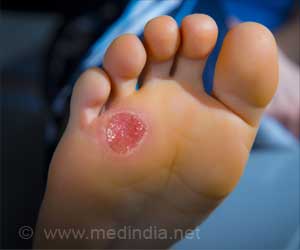
‘Northwestern Medicine scientists have discovered a delinquent gang of molecules that continually shouted at an immune receptor - the antennae on the cell -- to produce scar tissue instead of quieting down and allowing the scar tissue to go back to sleep.’
Tweet it Now
Fibrosis - a progressive scarring and hardening of internal organs - is estimated to cause 35 to 40 percent of deaths in the world. Fibrotic diseases include diabetic kidney fibrosis, alcoholic liver cirrhosis, hepatitis C, pulmonary fibrosis and nonalcoholic fatty liver disease, which may lead to fibrosis of the liver, the leading cause of liver transplant. Scientists collaborated with a University of Colorado researcher who used crystallography and computer modeling to predict a molecule that could block the receptor that leads to the uncontrolled scarring. When they tested the molecule, T53, in three different mouse models of fibrosis, the abnormality was significantly reversed.
"Our study opens a new door into fibrosis by looking at it as an aberrant innate immune response and suggesting a novel approach to treat it," said senior author Dr. John Varga, director of the Northwestern Scleroderma Program and the John and Nancy Hughes Distinguished Professor of Rheumatology at Northwestern University Feinberg School of Medicine.
The paper is published in the Journal of Clinical Investigation Insight.
"The leading cause of liver failure in western world is obesity and that's because of liver fibrosis," Varga said. "In the U.S., many of these diseases are lifestyle or age dependent. As we get fatter or older, they get worse."
Advertisement
Not everyone's fibrosis is caused by the same abnormality, Varga said. If the compound, T53, is eventually developed into an approved drug, it would be targeted to patients with the specific genetic signature identified in the study.
Advertisement
"The results of this study are encouraging," Varga said. "We are not saying this compound is ready to be a drug. It's an initial compound that would need to be developed and tweaked. It would need significant funding to go to the next step."
Varga has spent more than a decade researching the cause and treatment of scleroderma, a type of fibrosis that simultaneously affects multiple organs. He directs the Northwestern Scleroderma Program, a clinical and research effort that follows 1,500 patients with scleroderma.
Source-Eurekalert









